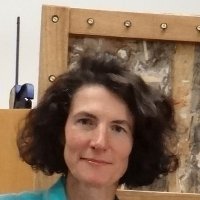In this series we ask a conservation professional 3 questions. The fifth participant in this series is Bryn Kelley. Bryn is the 2023/2024 Student Representative of the Icon Scotland Group, working to represent students studying conservation in Scotland, and is currently studying Textile Conservation at the University of Glasgow. As with many in conservation, he comes from an interdisciplinary background and appreciates the unique multi-faceted foundation of conservation.

My favourite thing about my studies:
While the number of treatments I have carried out is few, they have encompassed many important aspects of textile conservation and have challenged me in a graduated way that I am very grateful for. These treatments and the reference collection held by the programme means I have had the opportunity to examine objects with construction techniques I had not previously physically encountered.
Additionally, I am especially passionate about exploring the composition and history of the object through blending historical research and analytical techniques. As a result, I have been able to not only understand the object but reflect on and adapt my treatments in action. I am incredibly lucky that the course is simultaneously focused on textiles yet incorporates broader context and brings in visiting lecturers to cover many topics.
A skill you might not know I have:
I am an avid rock climber, regularly climbing both indoors and outdoors. My favourite trip I’ve taken so far was a trip to El Choro, Spain.
Related to conservation, I studied Organic Chemistry during my undergraduate studies so laboratory and instrumental analysis techniques are familiar, and I enjoy problem solving in these areas.
Something that can make me spring out of bed in the morning:
I’m not sure anything makes me *spring* out of bed, as mornings and I are not the best of friends. That being said, I find new experiences, be it conservation or elsewise, very motivating, and put a great amount of pep in my step. One of my favourite sort of adventures is experiencing new museums and heritage sites.









